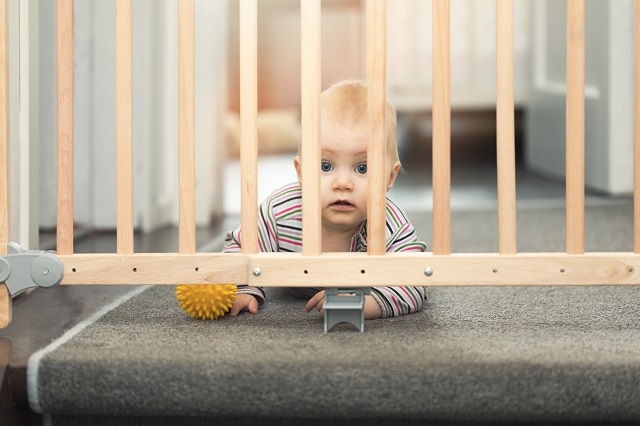
Whether you’re looking to buy or build a home, all prospective homeowners have their own laundry lists of wants and needs. Some are practical, like the number of bedrooms and bathrooms or the amount of square footage. If you happen to be a parent looking for your next home, there is one item that tops both of those lists, and it’s non-negotiable: a safe, healthy place for your children to live, learn and play.
Home safety is a valid concern for parents. More than 3.4 million children are unintentionally injured at home every year. More than 2,000 children under the age of 15 die from injuries like choking and suffocation, drowning, falls, fires, burns, gunshots, and poisoning.
Statistics like these can be scary for parents, but they can also serve as motivation to go the extra mile when it comes to ensuring the place where your children spend most of their time is free of hazards. So, you install smoke and carbon monoxide detectors and check them regularly. You invest in a home security system that will ensure help is on the way in the event of an emergency. You baby proof, well, everything. If there is an easy, budget-friendly modification you can make to keep your children safe and give you peace of mind, you make it happen.
In addition to these do-it-yourself projects and fixes, there are some built-in safety features parents can look for or implement themselves. Some homes are inherently safer than others when it comes to preventing accidental injuries. It all depends on the home’s construction, furnishings, updates, and maintenance.
Structural Issues
A well-built, structurally-sound home is naturally going to be safer for you and your family than the alternative. If you’re buying, a home inspection should include checking for these issues. If you’re building, a reputable contractor will ensure each of these points are addressed. Either way, it is your responsibility as a homeowner and a parent to be certain your home meets all of these criteria.
- Drainage: Proper drainage underneath and around your home prevents damage from water seepage and flooding, but it also protects your family’s health and safety by preventing the growth of toxic mold. In addition to visible mold growth and signs of water damage, condensation could indicate a moisture problem. You may also be able to smell mold if it’s present. If building your new home, make sure a qualified architect or engineer has approved the site plan and that excess water flows away from your home.
- Wiring: A common safety concern for older homes is mismatched copper and aluminum wiring in spaces where updates or repairs have been made. As most wiring is hidden out of sight, it is one of the most difficult hazards to identify. Consider consulting a reputable, licensed electrician at your own cost to inspect a home’s wiring before you purchase it. If you’re building, you should have your wiring inspected before your builder closes up the walls.
- Outdated Materials: Another hazard of older homes is the use of outdated, toxic building materials like asbestos and lead paint. Request confirmation from your real estate agent these types of materials were not used or have been removed entirely, and ask a home inspector to verify. New homes should be free of these materials.
- Additions and Modifications: From decks to additional rooms, any and all additions and modifications made to a home should be thoroughly inspected to ensure they are built to code. New appliances like water heaters and HVAC units should also be closely looked at to ensure they have been properly installed and will not overextend a home’s electrical capabilities.
Ready to start your Childproofing?
Find ProsFlooring
If you have watched a child as he or she learns to walk, it won’t come as a surprise that one of the most common accidental injuries, fatal and non-fatal, among children is a fall. As your kids are learning to use their growing bodies, certain types of flooring may be better than others at preventing falls.
- Flooring Type: While hardwood flooring has many virtues, from being easy to clean to keeping allergies at bay, carpeted floors are generally a softer place to land. Falls are less traumatic on a soft surface, so it makes sense to look for a home with carpet in spaces where children will be spending most of their time, like bedrooms, family rooms, and bonus rooms. As an added perk for parents of young children, carpet can provide sound insulation.
- Rugs: a popular decorative feature in most homes, as well as a great way to bring a soft surface into a room with hard floors like bathrooms, kitchens, and dining rooms. However, rugs can also be a tripping hazard. Avoid throw rugs that fold underfoot or rugs with curled edges. If possible, secure rugs to the floor or use a rubber rug mat to prevent unwanted movement.
Doors & Windows
A child’s innate desire to explore is strong. For that reason, children are drawn to windows and doors. But an unsecured exit can be dangerous for a curious child. Luckily, many homes have built-in safety features that keep your child where he or she is supposed to be, safe and sound.
- Locks: Doors and windows are used more than any other feature of the home, so locks should be checked regularly and replaced as needed. Childproof door and window locks are available and should be used in areas where children are not under constant supervision, like bedrooms and playrooms.
- Screens: If your child’s bedroom or playroom is not on the main level of the home, consider investing in window guards. Unlike screens, these guards will not give way under the weight of a child, protecting him or her from a fall in the event he or she is able to open a window.
- Door Alarms: Built-in or add-on door alarms can alert a parent when a child attempts to leave a space. Many alarm systems come with a door chime feature. Door and window alarms can also be installed separately.
- Dutch Doors: an excellent way to keep children in (or out of) a space. Built-in, locking half doors at the top and base of stairs are more secure than after-market safety gates. Dutch doors in place of full doors can keep children safe without removing them from your sight line and can still be closed entirely as needed.
Optional Features
For many people, optional home design elements are considered added perks. For parents, these bonus features can present additional safety hazards. While you may still want a home with a fireplace or a basement, you may need to take extra precautions.
- Fireplaces: Ones with outer hearths made of brick or stone are sharp and can injure children in the event of a fall. Consider a fireplace with a rounded outer hearth or none at all. Also, in lieu of a fireplace screen, you may want to install a fireplace gate to prevent a child from getting too close to the fire or hot materials around it.
- Built-In Shelving: Large, heavy pieces of furniture can tip over and fall on children, leading to serious injury or even death. For this reason, built-in storage is actually an advantageous feature as they can replace large, heavy furniture pieces that need to be anchored to a wall to prevent tipping. Or, you can purchase affordable kits that secure large bookshelves and containers to the wall.
- Garage Door: Whether you intend to use the space as a work area or automobile storage, garages are big selling points for buyers and a natural choice for those building their own homes. Just be sure your garage door is equipped with modern safety features like auto-reverse, motion detection, and manual controls. In an older home, inspect the garage door to ensure these features are present and working. If not, discontinue use of the door until it is fixed.
While you want to make sure your child is safe, it’s also important to make sure they can live and play at home freely. However, there is a reason children are renowned for their ability to climb, wiggle, and otherwise maneuver their way out of just about anything. They are brilliant escape artists, and, in truth, there is no way to guarantee they won’t accidentally hurt themselves at home. However, with every one of these safety measures you put in place, the likelihood of injury or fatality is lessened, making them well worth the investment.
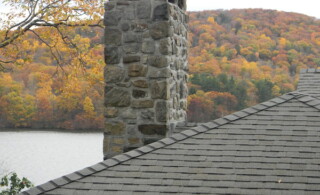 Chimney Maintenance Keeps Your Family Safe
Chimney Maintenance Keeps Your Family Safe  20 Home Staging Statistics and Tips
20 Home Staging Statistics and Tips 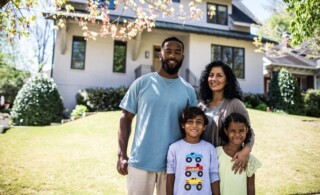 11 Home Security and Safety Tips
11 Home Security and Safety Tips 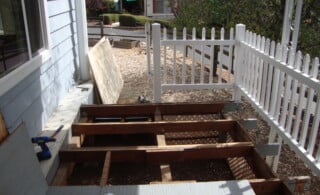 Simple Home Repair and Maintenance Tips for Everyone
Simple Home Repair and Maintenance Tips for Everyone 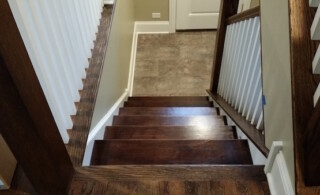 Making Your Stairs Safe
Making Your Stairs Safe 

Are You Familiar With This Topic? Share Your Experience.